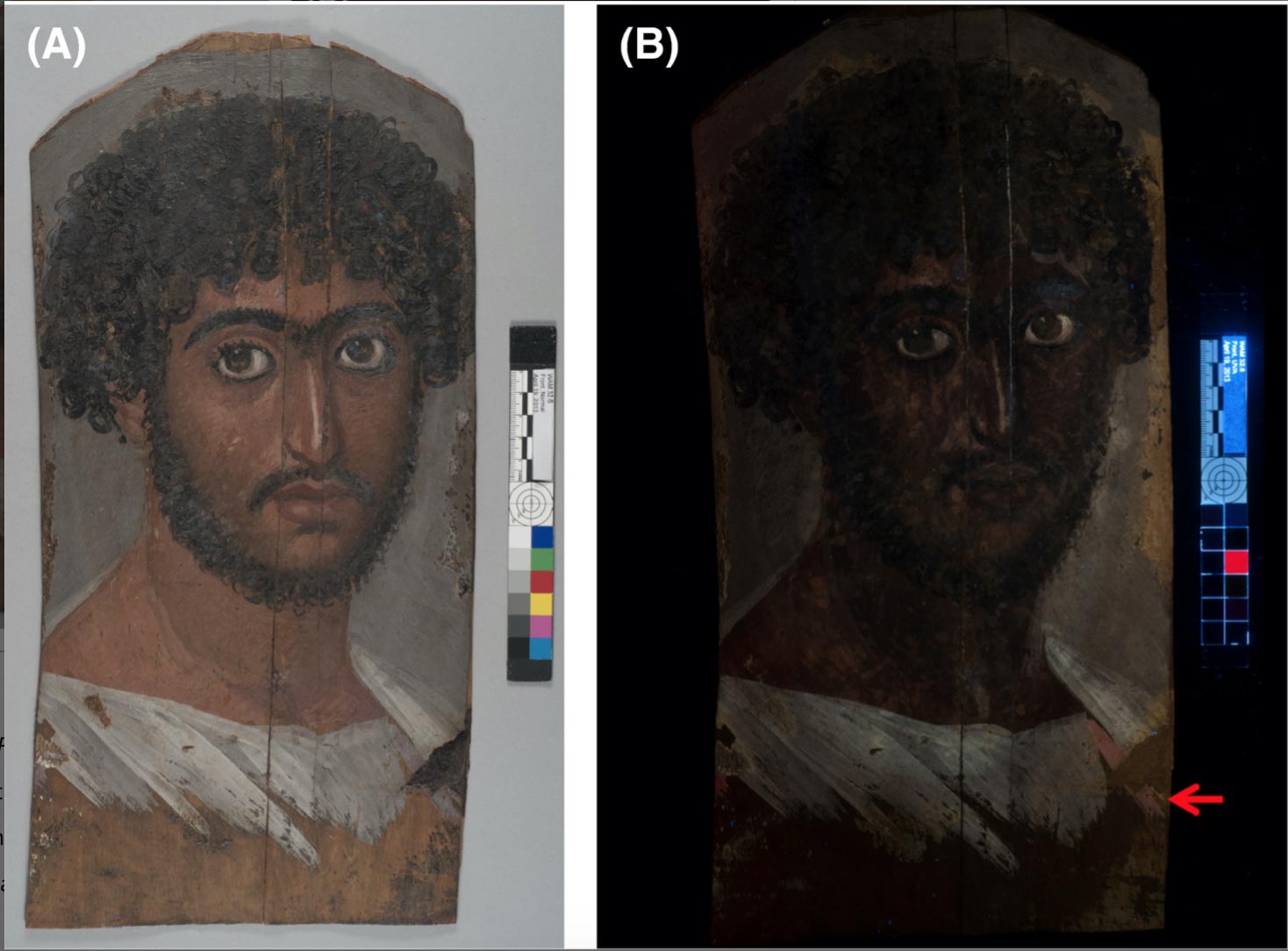
“Since the purple pigment occurred in the clavi—the purple mark on the toga that in Ancient Rome indicated senatorial or equestrian rank- it was thought that perhaps we were seeing an augmentation of the sitter’s importance in the afterlife,” says Glenn Gates of the Walters Art Museum in Baltimore, where the portrait resides.
The color purple, Butt says, is viewed as a symbol of death in some cultures and a symbol of life in others.Paraphrasing the author Victoria Finlay, Butt says that purple, located at the end of the visible color spectrum, can suggest the end of the known and the beginning of the unknown.
“So the presence of purple on this particular portrait made us wonder what it was made of and what it meant,” Butt says.“The color purple stimulates many questions.”.
A magnified detail of the left clavus, showing a large purple pigment particle with a rough gem-like appearance.Through a microscope, Gates saw that the pigment looked like crushed gems, containing particles ten to a hundred times larger than typical paint particles?To answer the question of how it was made, Gates sent a particle of the pigment to Butt and his team for analysis.
“The particle was shipped to me from Baltimore, sandwiched between two glass slides,” Butt says, “and because it had moved approximately a millimeter during transit, it took us two days to find it.” In order to move the particle to a specimen holder, the team used an eyelash with a tiny quantity of adhesive at its tip to make the transfer.Butt and his colleagues hypothesize that the purple used in this mummy painting is something else—a synthetic purple.
The researchers also hypothesize that the synthetic purple could have originally been discovered by accident when red dye and blue indigo dye mixed together.From there, the mineralogy of the pigment sample suggests that the dye was mixed with clay or a silica material to form a pigment.A pigment sample showing layering within the particle.The pigment showed evidence suggesting a crystal structure in the pigment.“Lake pigments were thought to be without crystallinity prior to this work,” Gates says.
The researchers found significant amounts of lead in the pigment as well and connected that finding with observations from a late 1800s British explorer who reported that the vats of dye in Egyptian dyers’ workshops were made of lead.
“Over time, a story or hypothesis emerged,” Butt says, “suggesting that the Egyptian dyers produced red dye in these lead vats.” And when they were done dyeing at the end of the day, he says, there may have been a sludge that developed inside the vat that was a purplish color.“Or, they were very smart and they may have found a way to take their red dye, shift the color toward purple by adding a salt with transition metals and a mordant [a substance that fixes a dye] to intentionally synthesize a purple pigment. We don’t know.”.
“Our results suggest one tool for documenting similarities regarding time and place of production of mummy portraits since most were grave-robbed and lack archaeological context,” Gates says.Reference: “Microstructural and chemical characterization of a purple pigment from a Faiyum mummy portrait” by Glenn Gates, Yaqiao Wu, Jatuporn Burns, Jennifer Watkins and Darryl P.I never met a purple pigment human, 2,000 years ago, who knows
